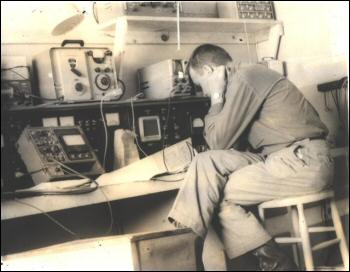History

- Installation of receivers and transmitters at the same fixed location allowed exchange of messages wirelessly
- 1907 - two-way telegraphy traffic across the Atlantic Ocean was commercially available.
- By 1912 commercial and military ships carried transmitters and receivers. Allowing two-way communication in close to real time with ships that are out of sight of land.
- Early schemes required training operators to learn and use Morse code, the operator had no other duties. Once voice transmission became available these dedicated operators were no longer needed.
- In 1933 - Bayonne NJ Police department operated two-way radio system between a fixed location and police cars. Emergency response.
- During WWII hand-held radio transceivers were used by air and ground troops.
- Installation of equipment in aircraft allowed scouts to report back observations real-time. Pilots used to have to drop messages to troops on the ground or land to deliver messages personally.
- Early two-way radio schemes operated in simplex mode: Only one station to transmit at a time while others listened. All signals were on the same frequency.
- By using receivers and transmitters tuned to different frequencies, simultaneous transmission and reception was possible at each end of the radio link: full duplex.

Two way radio installed for use by forestport firemen February 1954.
|



